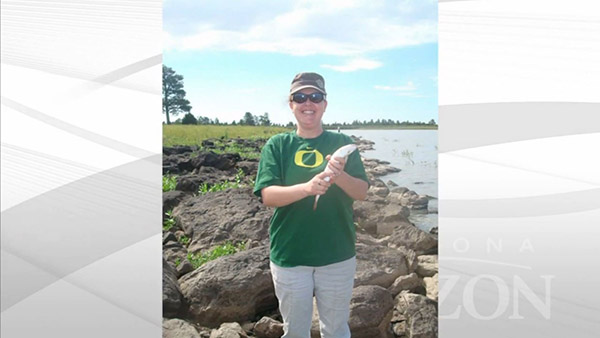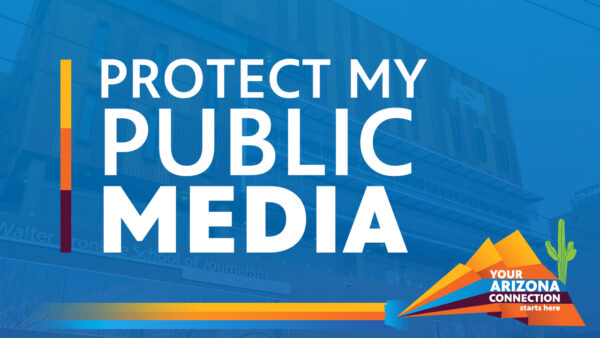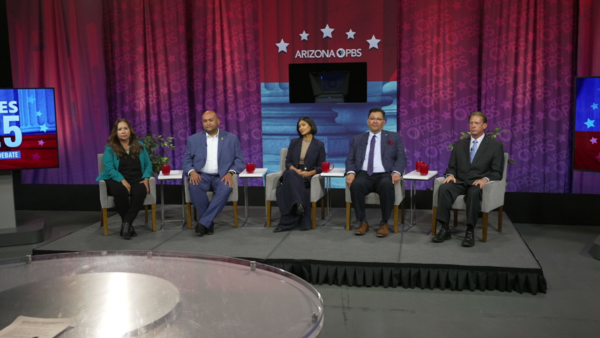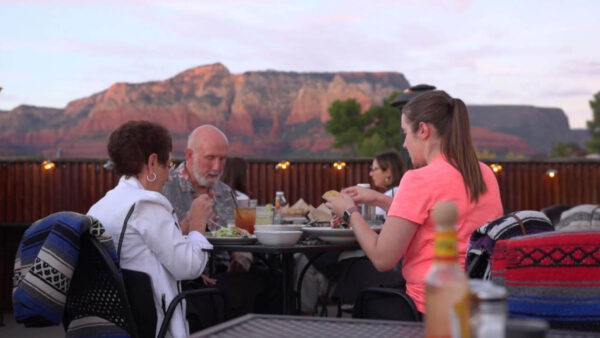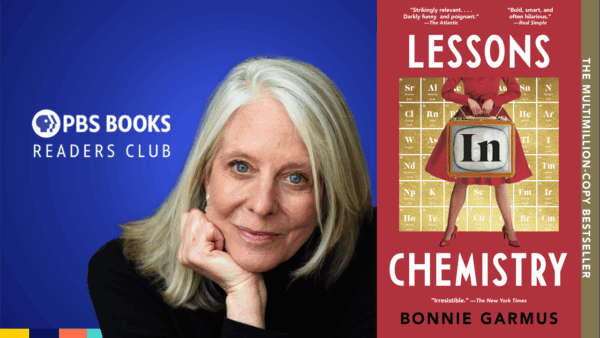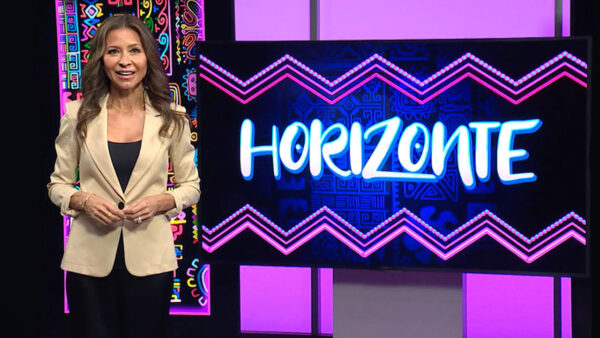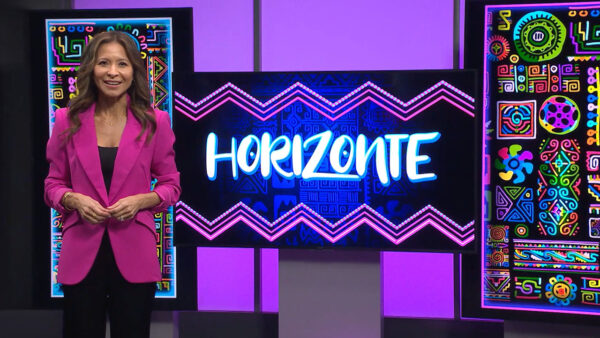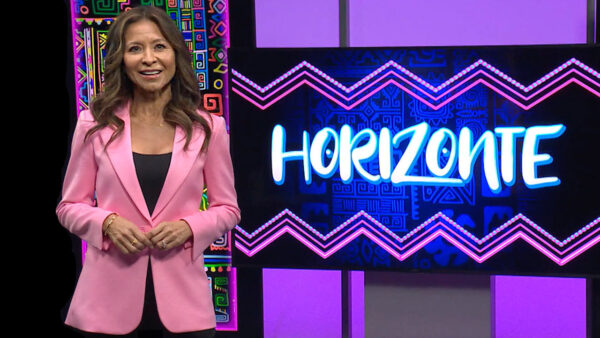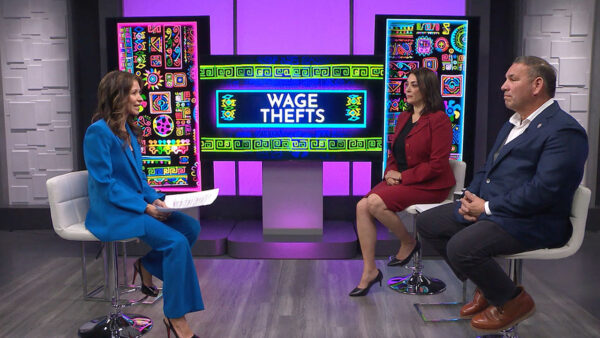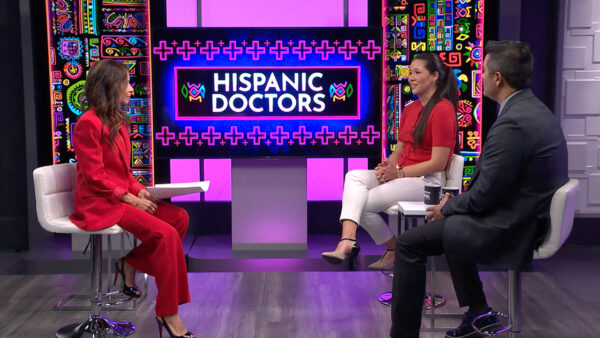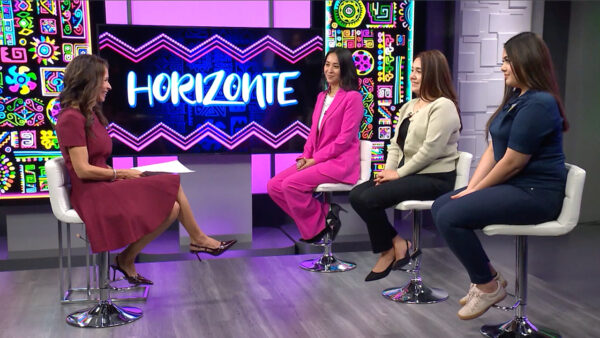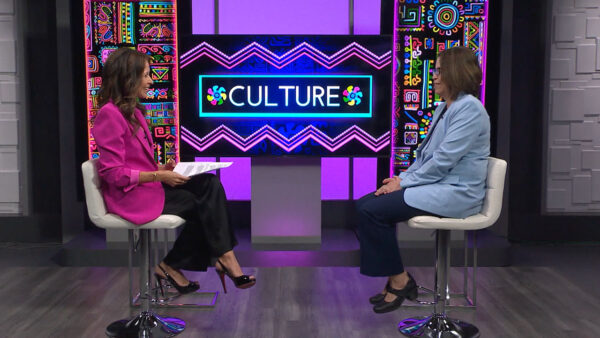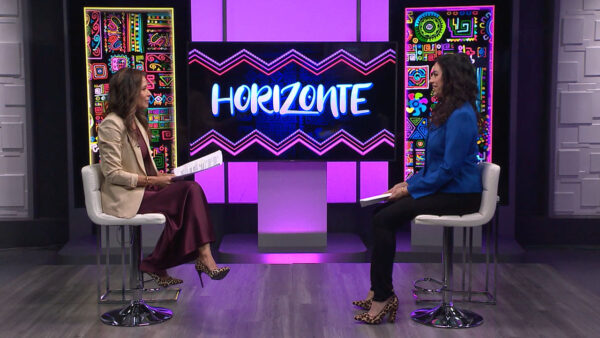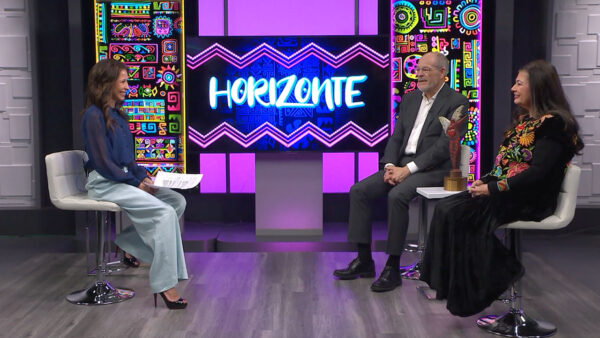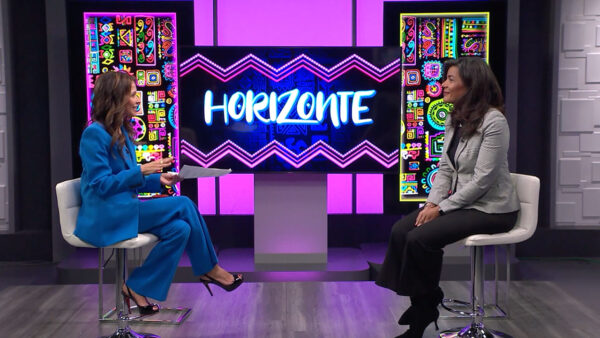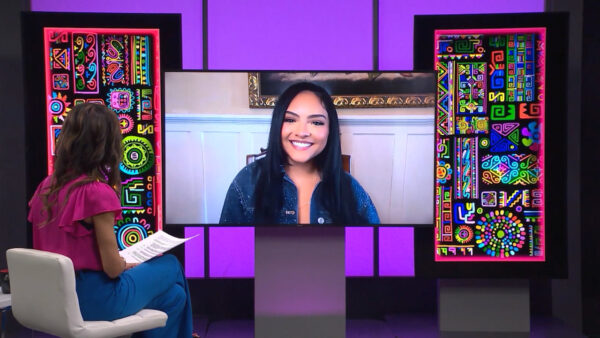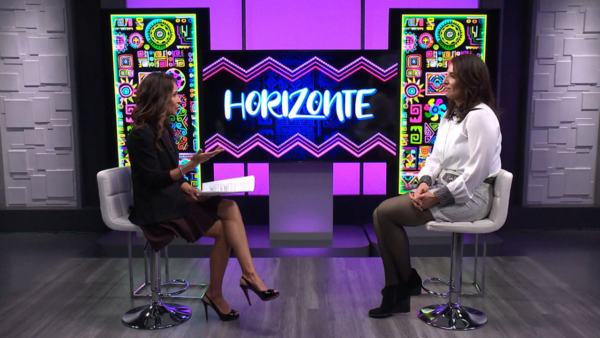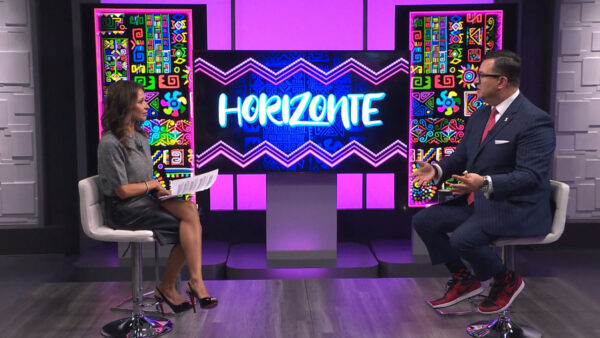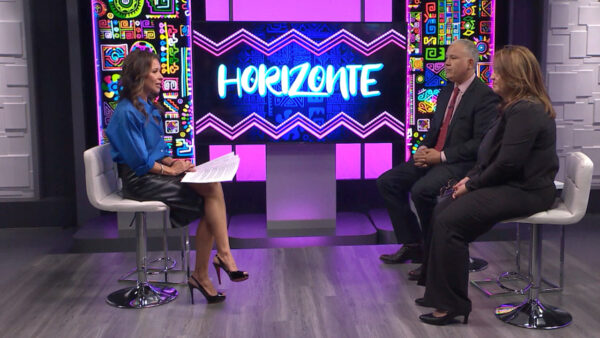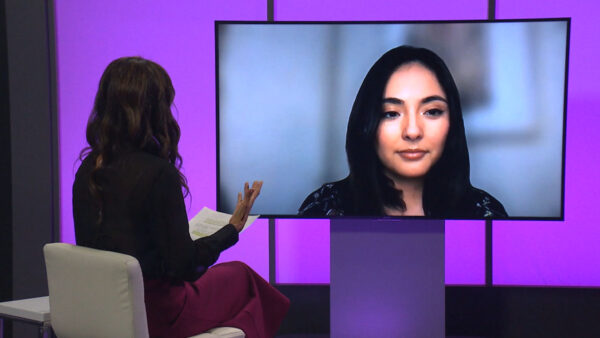It’s been two months since voters passed Proposition 300, the law requiring undocumented immigrants to pay out of state tuition. Now, Arizona universities and colleges are discussing how to implement this new law. Regent Gary Stuart from the Arizona Board of Regents and Mary Lou Massel, Dean of Enrollment Services for Maricopa Community Colleges join Horizonte to talk about the impact of Proposition 300.
Jose Cardenas:
Good evening. I'm Jose Cardenas. Proposition 300 was approved by voters last year. It forces undocumented immigrants to pay out of state tuition. But now the question is how will it be enforced? Tonight a discussion of the impact of this new law on Arizona universities and colleges. And actor Cheech Marin is known for his work on the big screen and on television. But there's a side of him you may not know about. Tonight an interview with Cheech Marin talking about his passion for Chicano art, and how he is sharing that vision with people across the country. These stories coming up next on Horizonte.
Announcer:
Funding for Horizonte is provided by SRP .
Jose Cardenas:
It's been two months since voters approved proposition 300, the law requires undocumented immigrants to pay out of state tuition at the state's public universities and colleges, prohibits students from receiving any type of financial assistance that is funded with state money and requires schools to determine and report to the legislature how many undocumented immigrants attend their schools. Now Arizona universities and colleges are deciding how to implement proposition 300. Joining us tonight to talk about this law are regent Gary Stewart from the Arizona board of regents and Mary Lou Massell, dean of enrollment services for Maricopa Community Colleges. Regent Stewart. Dean Massell, Welcome to Horizonte.
>> Thank you.
Jose Cardenas:
Regent Stewart, the accusation has been made that indeed two months have passed since proposition 300 was approved, and still the universities and community colleges to a lesser degree perhaps have yet to take any action to implement it. Sponsor Dean Martin has accused the colleges and universities of foot-drags.
Gary Stewart:
It's an easy thing to refute. We have not drug our feet at any time. This statute passed, became law December 6, 2006 . We had our first meeting on this on December 1. Less than three weeks after the referendum passed. So we started the process then. We worked on it last Thursday. We had the second reading of what eventually became a first reading. Our rules and state law requires that we establish policies to comply with prop 300. In our case that's six different policies.
Jose Cardenas:
And when you talk about readings you're talking about the legal requirement that you have a reading first and second before --
Gary Stewart:
Before you implement it so that everybody has fair and full notice. We also can't act in the absence of meeting in open session and we can't act unless it's noticed on the agenda, so the first time we could possibly do this was December 1, and we did we started the process then. We had the second wave of information just last Thursday because that was our next scheduled meeting. We'll probably implement as much of this as we can at our March meeting in 2007. But that's the fastest possible way to get to compliance with this proposition in compliance with the state law. And that's what we're going to do.
Jose Cardenas:
Right now the question is not being asked, is that right? As to legal resident status.
Gary Stewart:
Well we're not in the application process. This proposition and this state law requires that the universities and community colleges identify those students who ask for in-state tuition status. So that's our first level. We take a first look at how many students are asking for in-state tuition. I can tell you that because we just got the fall enrollment report just this last board meeting that 70,421 resident students are in our system as of last week. Of that group, that's out of 120,000 total students, so the difference is the non-students, the nonresidents. We'll ask this group of 70,000 to document their compliance. They are the ones that have to comply, but we have to certify that in some fair process way, and that's exactly what we're going to do. We'll identify this first group, then this spring as the applications are processed, that's a second group. Those are not current students. But let me give you some sense of the scale of this, if the question is are we dragging our feet. The scale of this is enormous. Last spring we had 62,418 individual under graduates apply for admission. Do we ask all of those who apply? If we did, we think the cost will be something in the vicinity of $100, maybe $200 per student to validate and confirm the necessary information to comply with the statute. But of the 62,000 that applied only 54,000 were admitted. Of the 54,000 that were admitted, only 24,000 enrolled. So if we spend the money on the first or second cut or the third cut we're talking about millions of dollars and hundreds if not thousands of administrative man-hours just to identify the first cut. This is not a simple process. This is a large scale, huge system. Maricopa County is probably bigger. They have more students than we do. So it's a problem there.
Jose Cardenas:
How many students, Dean Massal, in this category of people your're going to have to ask the question to?
Mary Lou Massal:
We have over 99,000 students at the Maricopa Community colleges. It's almost 100,000. So we're eventually going to have to ask every one the students about their citizenship status to determine their eligibility.
Jose Cardenas:
I assume there are a small percentage out of state, but the vast majority are going to be in state students.
Mary Lou Massal:
At the community college only about 2% of our students who are out of state. The rest are in-state students. Now up to this time of passing proposition 300 we weren't asking the types of questions that would get to the answers that we now need to provide as to whether they are eligible for in-state or out of state. So we've had to revamp our student information forms to begin to ask different questions. Our student system so it could accommodate the data that we're asking on the enrollment forms, and also our online systems that are actually programmed by outside vendors that we have to get them reprogrammed too.
Jose Cardenas:
Now as I understand it, you are asking the question. You may not have the verification process in place but you are asking the question.
Mary Lou Massal:
Correct.
Jose Cardenas:
But that wouldn't have applied to the students who are currently enrolled because the statute wasn't in effect?
Mary Lou Massal:
It wasn't in effect until December, and we had already enrolled most of our students for spring term. So once it went into effect we redid our forms and began asking the questions. And we are in a position now for those that identify themselves that they are not in a legal status that we would charge them out of state fees.
Jose Cardenas:
And has anyone so far identified themselves as not being a legal resident?
Mary Lou Massal:
Yes.
Jose Cardenas:
Any kinds of numbers?
Mary Lou Massal:
I don't know the exact numbers across Maricopa. I know there's been some at the college where I am, but I don't know the numbers across Maricopa at this point. We haven't run any reports on that.
Jose Cardenas:
As I understand it, prior to proposition 300, legally you couldn't ask this question. Is that right?
Mary Lou Massal:
That's correct. In the '80's, we were part of a lawsuit, and the courts dictated that we could not discriminate against individuals who were not here in a legal status. And we were told that at that time we had to allow them to enroll if our institutions and allow them to establish in-state residency. So all our process has been built on that for the last 20-some years. Now with this new law, we're having to re-evaluate everything that we do. At the community colleges, unlike the universities, we don't have an admissions process. We're an open institution. And there's automatic admission unless you're suspended maybe from another institution or something like that. And so we don't have the kinds of staffing in place and things like that, the kind of admission selection process that the universities have, so it's going to be quite a significant change for the community colleges.
Jose Cardenas:
So Regent Stewart, the community colleges have some problems that are unique to them. But the universities have their own set of problems that would be different because as I understand because you have a different -- different schools with their own separate admissions processes. Can you comment on that?
Gary Stewart:
Sure. We have three universities. Those three universities have eight different campuses, and campuses tend to compete and recruit and advertise and market for their campuses. In addition to the campuses we have colleges and professional schools at each of the three universities that have separate admissions. For example, the law school here and the law school at the University of Arizona admit their own students. The medical school, the college at the University of Arizona admits its own students. And each of those has a process in place, not all of which are identical, but they are identical in one way. None of them require evidence or proof or even a statement with respect to citizenship because our whole system is based on residency or non-residency. And when we have lots of rules and lots of processes in place to determine whether or not you're a resident or nonresident, but this third layer now that we are going to comply with is citizenship or legal immigration status. So we don't have any forms. We're also struggling with the online registration because there the verification systems are going to have to be very different. Somebody who never physically shows up on campus at all but enrolls online. So we'll figure out a way to ask the questions and get the information, but we haven't yet figured out exactly is how large a problem it is, how many of the rules, not the rules, but the systems have to be changed. So that's a huge process.
Jose Cardenas:
Regent Stewart, any estimate as to how much this is going to cost to implement?
Gary Stewart:
Starting at our meeting in December and again now we're having general discussions. And most of them are just individually talking to administrators, what do you think this will cost? We know for example when we did the analysis three years ago to look at fingerprints to get information about criminal backgrounds on students or faculty that the cost of that was about $50 per assessment. So if that's an accurate cost and if you're talking about $ 70,421 assessments just in one year alone, then you're talking about 3 or $4 million, and that's going to ramp up because you have to make this reapplication over time. The front end money will be the biggest piece, but it will probably cost hundreds of thousands of dollars every year to make this assessment, so that we can send two letters to the state legislature to give them the information that they are absolutely entitled to.
Jose Cardenas:
On the cost to the students, the difference between in-state and out of state tuition at the university level is what?
Gary Stewart:
the average in-state tuition is about $4400. The average out of state tuition is about $13,000.
Jose Cardenas:
So 9 to $10,000 difference.
Gary Stewart:
Depending on school and university and program.
Jose Cardenas:
And Dean Massel for the community college level what's the difference in cost to the students?
Mary Lou Massal:
Full-time students in state is about $850. For an out of state student full time it's $2510.
José Cárdenas:
So a $2,000 difference. We are about out of time, one last question. I understand Arizona is the only state in the country that requires this?
Gary Steward:
Yes. We have looked for compatible systems and because no one examines their student body for citizenship or immigration status we don't have any models to follow. We are going to create new questions and new systems and put them in place in order to get the June letter to the state legislature in the form that they want it. They want two pieces of information. How many in-state students do you have that are being supported by in-state tuition and how many students who did not qualify for in-state tuition because of their citizenship or immigration status.
José Cárdenas:
We have to leave it at that for now. I'm sure we'll be following this story as it unfolds. Thank you for joining us tonight on Horizonte.
José Cárdenas:
The Arizona arts community held the southwest arts conference in Glendale . The keynote speaker was actor Cheech Marin, Marin is an advocate for arts and culture and regarded as the country's foremost private collector of Latino art works. It's a side of the actor you may not know about. I had the opportunity to sit down with Cheech Marin to talk about Chicano arts and culture. And his book called Chicano Visions, American Painters on the verge . Cheech Marin Welcome to Horizonte.
Cheech Marin: Nice to be here.
José Cárdenas: You're very well known as an actor, but you're also a writer and you've described yourself as well educated in art from the fifth or sixth grade on. What do you mean by that?
Cheech Marin:
Well, in my youth I remember distinctly the incident I was in the second grade and we had gone down to the grand central market. The teacher asked us to draw our impressions of what we saw. I drew this huge squash, a big gourd, it was like bigger than me. The teacher said, "You'll never be an artist". It was like crushing. I was so proud of this. It's like a dagger to the heart. From that point forward I didn't know drawing or art was something you could learn to do. I thought you either had it or you didn't. I accepted that I didn't have it at that point but I really liked art. Growing up catholic you're exposed to liturgical art all the time on the walls of the church, but I was impressed by the images, so I started learning about art. I said if I can't do it I'll learn about it. I had a group of cousins who we were very academically encouraged by our parents, and we challenged each other to learn stuff. So I used to go to the library in fifth or sixth grade and take out the art books and look at them. Try to sophisticate myself as -- I wanted to walk into a room and go, oh that's a lovely Kindinsky or that's a nice Miro, like that was going to happen. I was a little kid from south central. It did happen eventually. That's how I got my start in art appreciation.
José Cárdenas:
What about your own work as an artist? I'm talking not just about your work as an actor but also just the visual arts.
Cheech Marin:
You know, I was never good at it. I didn't have the facilities for drawing. If you didn't draw, to me that was art, until I got to college and my last year, my very last semester, I took a ceramics class, just to fill out the card. I only had a couple things to do to get my degree. I fell in love with pottery. I just quit all my other classes. I took out a $900 NEDA loan and just did pottery all day, released my inner artist. From that time forward I became a professional potter and moved to Canada and did pottery there, then eventually got back into music.
José Cárdenas:
Did you ever go back to that second grade teacher and tell her how wrong she was?
Cheech Marin:
Nah! She's dead!
José Cárdenas:
Mr. Marin you're also a writer. You've written many books including a new one on your art collection and it's a book entitled Chicano Visions, American Painters on the verge . First of all what's the title mean?
Cheech Marin:
Well I wanted it to be a little bit ambiguous. I wanted the reader to supply his own interpretation. Chicano painters are on the verge of a lot of things: Emotional breakthroughs, wider recognition through out the country and now the world of just what they are doing, and a spiritual edginess. A lot of edges. It was taken from the picture of the same name, women on the verge of a nervous breakdown. Almodovar, t he Spanish director and that phrase just kind of leaked into the lexicon really popularly. Everybody uses on the verge, it became a kind of very popular term. So I used it for this book. Some artists liked it and some of the artists didn't like it. Because well I'm not on the verge, I sell paintings for $5,000. Well, a lot of people sell paintings for $5 million. So let's get to that point.
José Cárdenas:
There are essays in the book by you and by several prominent arts professors. It seems the common theme in terms of the definition of Chicano art is that it's a bicultural experience. What do you mean by that?
Cheech Marin:
You grow up in two cultures simultaneously if you're by definition Chicano, which is Mexican pastoral meets urban angst. That's kind of the influence it's a huge Mexican tradition of the arts meets American pop culture. Where those two worlds collide it makes Chicano's and Chicano art. Chicano really, the word started out as it was an insult from Mexicans to other Mexicans living in this country, the concept being the Mexicans living in this country were no longer truly Mexicanos. They were something less. They were little. They were Chicos they were Chicanos. Little satellite Mexicans living in another country. So it was an insult. But depending on where you lived in the country, depending how much that insult was is true. I grew up identifying myself as a Chicano was it was the only word that really described me. So when you live in both those cultures, you participate in the phenomenon known as code switching. I heard it all my life and never knew what it was. My parents would be speaking English. They grew up in Los Angeles and they spoke English and Spanish. They would switch to Spanish for two words and back to English. There's not like there was a better word for Laundromat in Spanish than there was in English. And I never knew why they did it. I asked my mother, why do you go back and the forth? I don't know, we just do. I was in San Antonio one time and a Swiss linguist told me, ah that's code switching. Code switching? What's that? It's an unconscious, automatic device that signals to the sender and the receiver the extent of immersion in both cultures and it goes back and forth automatically, almost unconsciously. I'm this far, I know this much about this culture and this much about that culture simultaneously. Almost like wearing a reversible jacket and switching it all the time. So you grow up in both those cultures and it's like, I think every language you learn you become, you increase your intelligence by 100%, so bicultural people I think are twice as smart.
José Cárdenas:
I want to come back to the subject of code switching. But first you described your first experience with Chicano art as similar to the first time you heard a new Beatles tune. How are those experiences similar?
Cheech Marin:
Well you know when…I grew up as a musician. I was a musician all my life. When you hear the Beatles you hear this strain of familiarity was built on music that you knew before. They covered a lot early rock and roll tunes, but they had a different interpretation, it was something that was so different that it really made it their own. It was in a different realm, they took electric music and really electrified it. And so there was the new and the traditional happening simultaneously. So when I saw the Chicano painters because of myself education in art I recognized the antecedents, I recognize all their influences. But it was a new interpretation of it. So it was that same phenomenon that I was seeing visually the same thing I heard with music. I know who they are influenced by. You can see it in the paintings, and I see how they interpret it in a very new way.
José Cárdenas:
We've talked about the Mexican influences on Chicano art. What about the influence on Mexican murals in particular?
Cheech Marin:
Well there are certain groups especially. But most of the painters came out of that tradition of the muralist, Siqueiros, Orozco, Rivera, and it was a social form of art. Largely for illiterate audiences in Mexico , the murals stood in for political awareness. Telling them what was happening in their neighborhoods and their history at the same time that. That theme was carried forward by the Chicanos, and that style of kind of political painting was at the inception of Chicano art.
José Cárdenas:
Let's talk more specifically about your collection. It's been on tour about five years? That's of your collection?
Cheech Marin:
Primarily of my collection. I think there's 84 pieces, 84 paintings, on the tour. And 65 come from my collection.
José Cárdenas:
How did you decide what to include in the exhibition?
Cheech Marin:
I wanted the biggest ones out there. You know very early in the process, I realized that at some point I was going to do a tour, and the thing from my experience that impressed me the most was large art, large paintings. I remember growing up during that process when I was looking through the books in the fifth or sixth grade I would come across Rembrandt's the Nightwatch, it was a painting of various guild members sitting around the table, looked like cigars, oh the cigar ad you know Dutch Masters, and oh the night watch. And I'd see it in a lot of book. The nightwatch This is a nice painting. I finally made my way to Amsterdam and turned the corner and there was the night watch, and it was the hugest painting I had ever seen in my life. It covered the whole wall. It was such an overwhelming experience, like, wow, does that make an impression! It was huge, 30 feet by ten feet. I couldn't believe the dimensions of it. My God. So in back of my mind when I started putting this collection together, the thing that makes the impression most is large canvasses. Fortunately Chicanos paint on a large scale. They like to be monumental. So it was easy to collect those pieces because they were left unsold because nobody had room in their house for a 24 by 12 painting. What are you going to do with it? And so it worked out well both ways.
José Cárdenas:
Cheech Marin, you've done so much more in your life than your secondary teacher probably ever expected, actor, writer, doing some animation now. What's next big project?
Cheech Marin:
I'm going to rest. No, I want to keep doing what I'm doing. I love the creative process. I love being involved in a project. I have a dream to kind of start writing novels, so I have started that. That's such a hard discipline. You have to actually do it. Get up every morning and write. That's my Chicano part kicking in, it has something else to do. But I would like to keep writing and I would like to keep traveling with the collection. Adding to the collection in the next 20 years. We're starting to take it internationally now. We have a show in Madrid in March, and we're negotiating for five shows in Japan . I'll just keep doing that. And collecting and showcasing new artists. My collecting is dependent upon my being employed because I'm not a philanthropist of the art that says send over 2,000 pounds of art. I have to be working in order to collect art. So I want to keep working so I can do that.
José Cárdenas:
Cheech Marin, thank you for joining us on Horizonte. We hope to have you back to talk about your novel when it's done.
Cheech Marin:
Man, that would be good. Thank you.
José Cárdenas:
That's tonight's show. I'm Jose Cardenas. Thank you for watching.
Gary Stewart: Regent, Arizona Board of Regents;
